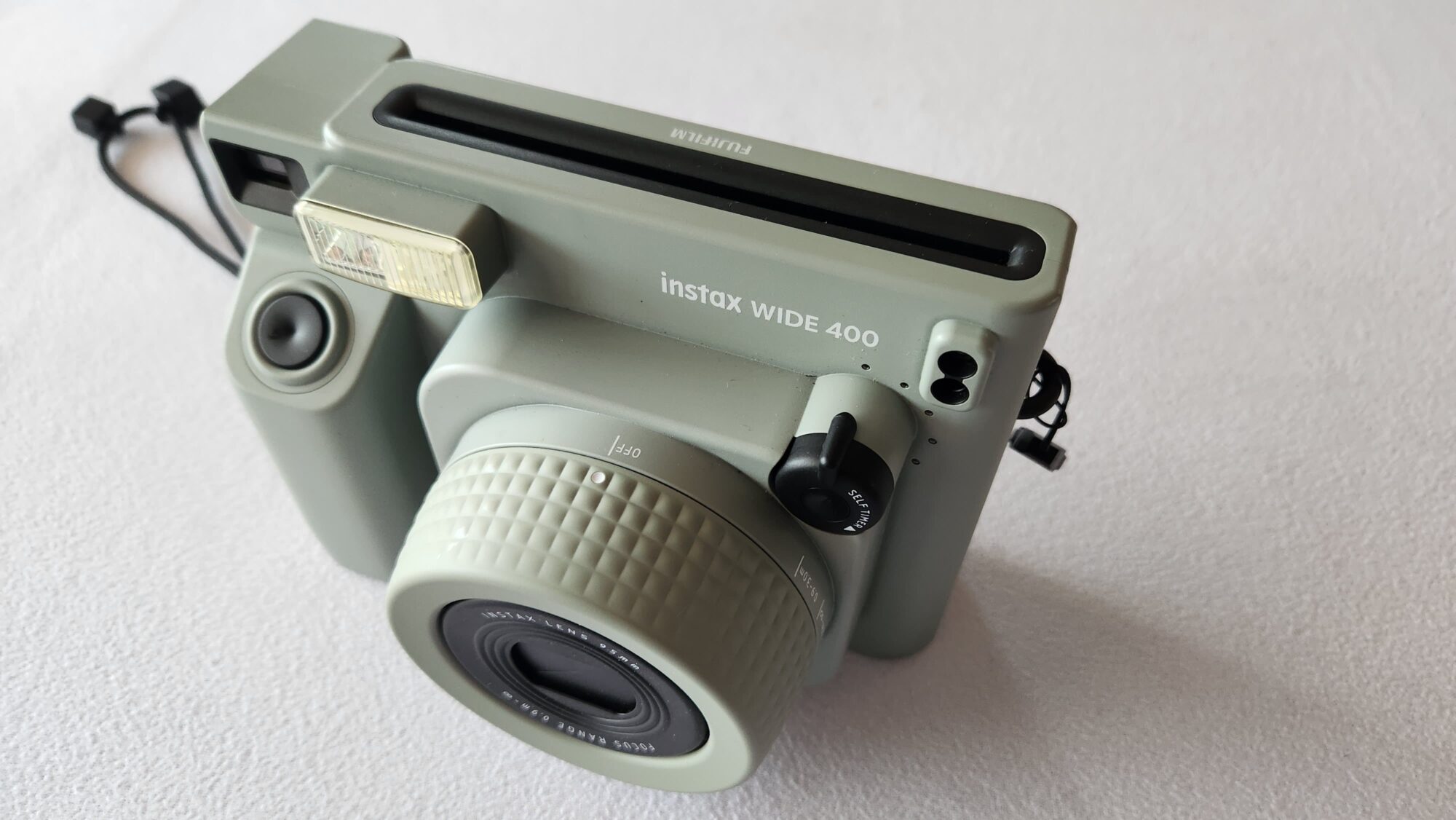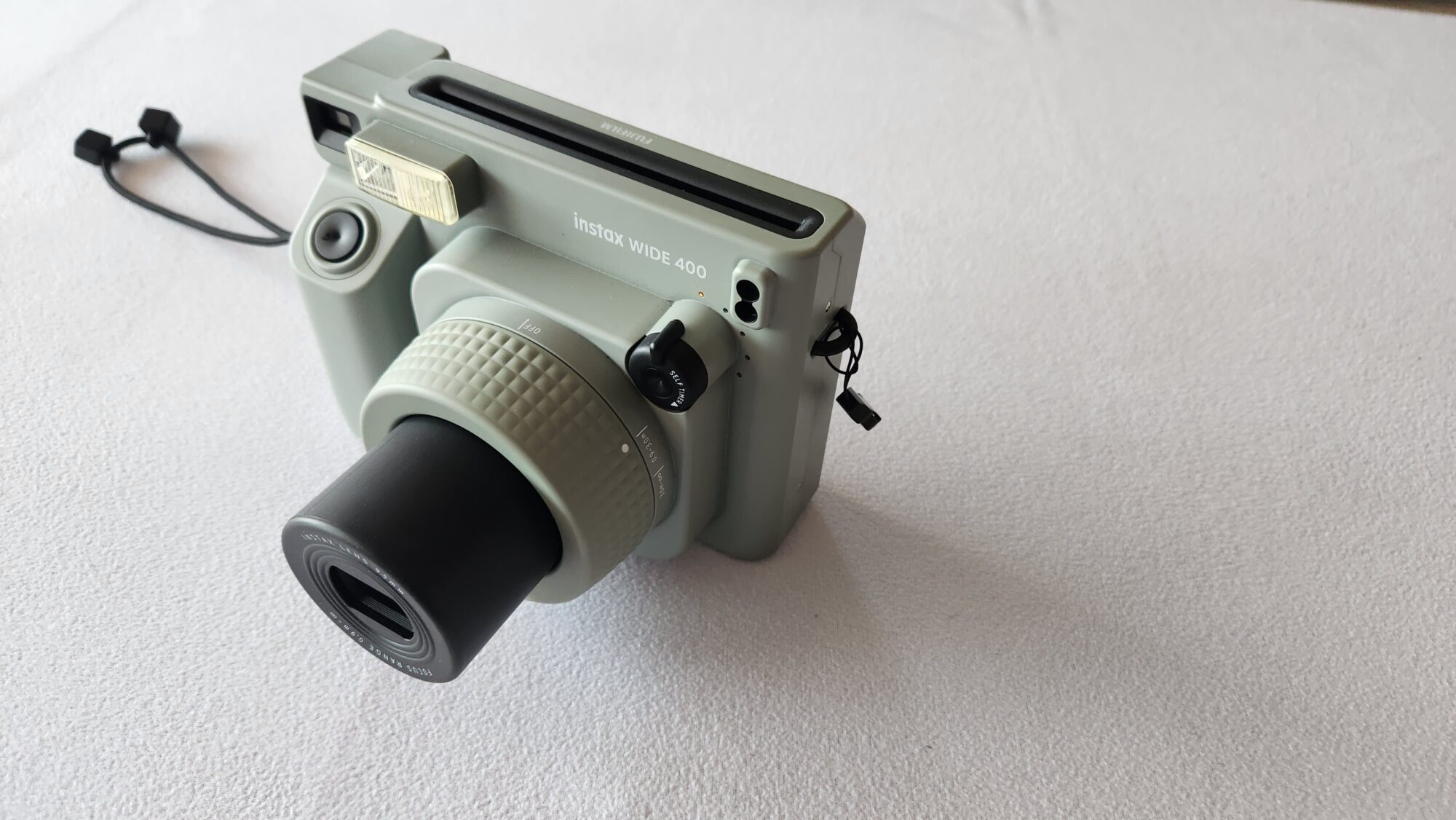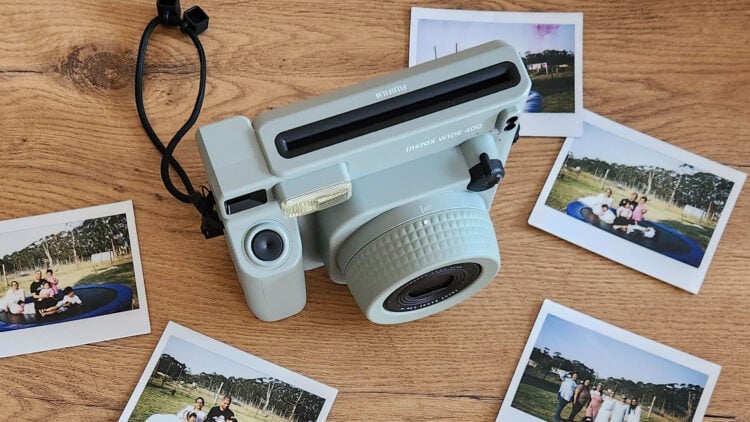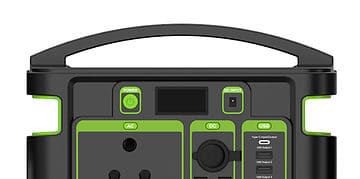Fujifilm’s Instax has been a staple for the brand for the better part of two decades. Although the first Instax launched in 1998, it wasn’t until the early 2000s that it took off, capturing the hearts and minds of retro photographers and a much wider audience after that. Over the years, we’ve seen new variants across the range of Instax cameras with varying success. The Mini and Square film variants have undoubtedly been the more successful lines, but there have occasionally been a few Wide options. The brand has recently updated the range with the Instax Wide 400.
The Instax Wide 400 is a throwback to a previous generation of instant cameras. It strips out many of the digital aspects of its other instant cameras, leaving behind an analogue base. While it may have gone back to basics, a few nifty modernisations are still added to spruce things up.
Build and Design

If you’re used to any other Instax devices, then the Wide 400 is massive by comparison. Compared to the previous Wide cameras, the 400 is still a behemoth. It weighs an impressive 616g – without the film loaded or accessories attached. It also measures 162×98×123mm to have sufficient room in the rear to house the 10-pack cartridge.
However, its large size does come with a few benefits. For starters, you get the larger film size – 62×99mm. That’s equivalent to having two mini prints stacked side-by-side. Being an instant camera means the lens required to expose the film must also be sufficiently large.
Secondly, it’s incredibly robust. Its plastic build feels solid in hand, and there’s much more room to allow for impact zones if dropped.
Unlike many other Instax cameras, the Wide 400 has a metal lock. The metal is a nice touch compared to other competitors on similar-sized models using plastic clips. To open, twist the lock clockwise and insert and/or remove your cartridge. As with all Instax models, the unit includes a yellow line that matches up against the cartridge to help you align for easier use.
It’s an almost complete overhaul on the design front in comparison to the Wide 300. Whereas the 300 has a two-tone finish, the 400 has an improved single-colour finish with a softer, light sage green colourway.
The right-hand side of the device features the handgrip and includes the battery compartment, which takes four AA batteries. I’m not a fan of using replaceable batteries on modern devices, but this is still the norm for instant cameras. It also helps that I still have a few rechargeable batteries that I can swap out if I run out of juice.
Despite its hefty build, the Instax Wide 400 has a decent design that doesn’t look too flashy but also not dull. The retro aesthetics is a throwback to the 80s and 90s cameras, which most fans will enjoy.
Specifications and Features

The Instax Wide 400 has a retractable lens. It has three different modes, which can be selected by turning its housing. This includes Off, 0.9-3.0m distance and 3.0m and beyond. The lens retracts and extends based on these options – clockwise to turn on to the first and second modes and anticlockwise to switch back and turn off again.
The package contents include two nifty accessories. First off is the Close-Up Lens attachment. This clips onto the lens and allows for more effortless selfies or images within arm’s length. You can also attempt a few macro shots with this lens, but it requires some fine-tuning in terms of the focus. You may waste a few shots before getting this right.
The second accessory is the Camera Angle Adjustment. This comes as a wrist strap commonly added to all camera contents. However, the difference here is the two added ‘risers’ that can be placed underneath the camera when it is placed on a flat surface to aim the camera upwards. This is an excellent addition for group selfies when it’s not attached to a tripod and makes life easier with two different heights.
Performance

When it comes to performance, the Instax Wide 400 delivers some of the best results around. It is speedy – probably the fastest instant camera I’ve ever experienced. Although it may not matter, the film is released in under five seconds, which is impressive. The film begins to show between 60 and 90 seconds and takes five minutes to develop fully. These are impressive times when you consider the size of the prints.
I’ve never been much of a fan of some of the OVFs on the Instax range. They often make it tricky to judge the distance and focus and require some trial and error. The OVF on the 400, however, isn’t half bad. It has decent brightness and excellent focus for objects further than 0.5m away, which is the majority of shots.
Switching to the Close-Up Lens attachment requires a bit more adjusting. The lens has a bit of a fishbowl effect to capture a wider image at close range. This is mainly added for selfies and the like, but when used via the OVF, you may need to adjust your range slightly.
The camera is rated at ISO 800, suitable for indoor and lower light settings. However, with a smaller aperture, it adjusts well to taking photos in bright settings while also having a more prominent focal area. It’s a bit of a juggle on the settings to ensure a reasonably decent image in various lighting conditions, especially without any manual tinkering available.
I’m also not big on using timed images, but the setup on the Wide 400 is reasonably practical. The toggle on the front allows users to turn the dial to their required setting, which then starts the countdown to the shot. It allows four different timing settings: 4, 6, 8 and 10-second intervals. As you release the trigger, an LED indicator will light up with the selected option.
While the various aspects of the camera play a role in the quality of images, none influences the result as much as the film when it comes to instant photography. In this case, the Instax Wide prints show a good level of detail with bold, oversaturated colours. This is normal for the range, especially considering the film’s glossy finish. The contrast is also good but does suffer a bit when it comes to light flare.
Images in well-lit environments deliver the best performance, as they should. However, the low-light photographer level before switching to the flash is quite decent. Since many of the images taken on the Instax cameras will be at closer range, avoiding the flash for as long as possible is ideal. However, the flash also does a decent job and isn’t overly harsh to overexpose your images at night.
RELATED: Instax Mini 99 Camera Review – A Retro Look and Feel
Is the Instax Wide 400 Worth It?
The Instax Wide 400 delivers a solid overall performance. With quick prints on large film being the standout feature, it’s pretty good. It’s easy to use and delivers good-quality prints. At an RRP of R3,499, it’s not expensive considering the large photos. It may be bulky for many users and doesn’t offer many filters or customisations.
The Review
Instax Wide 400
The Instax Wide 400 is a complete overhaul of its predecessor, changing the design and feel of the camera. It has a retro 90s aesthetic and delivers excellent image quality on a much larger print.
PROS
- Wide prints
- Quick release and development
- Retro design
CONS
- No custom filters and effects
- Very large
















